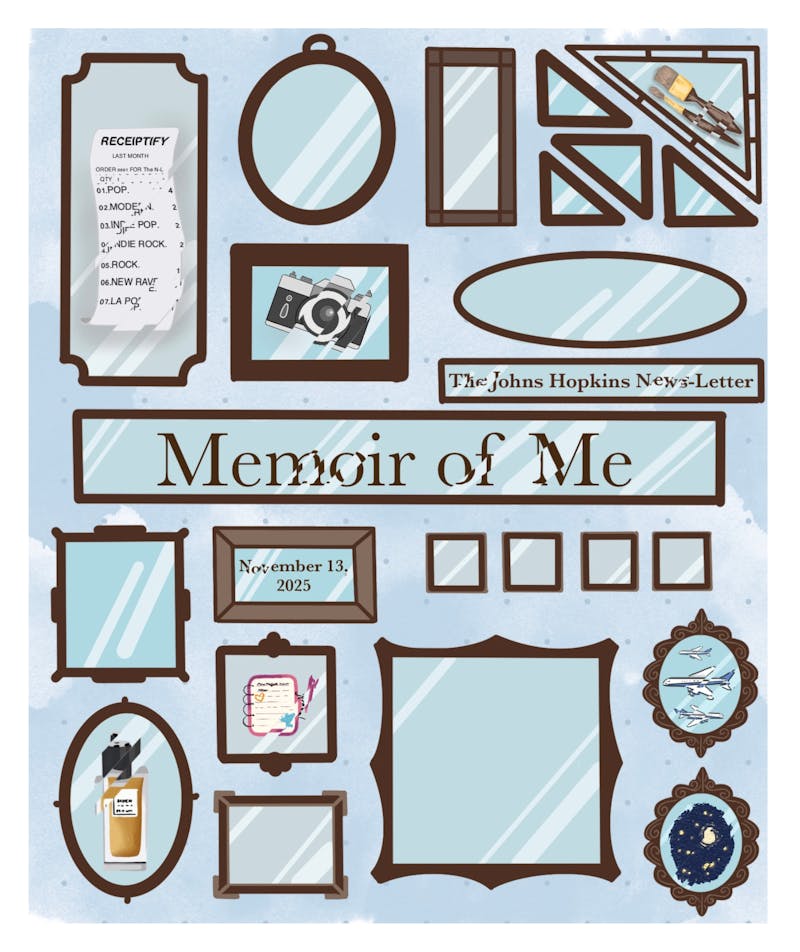The Baltimore Museum of Art’s new featured exhibition, Guyton/Walker, which opened on Wednesday, gives new meaning to “hyperactivity.”
The exhibition is a collaborative effort by New-York based artist Wade Guyton and long-time collaborator and friend, Kelley Walker, and runs in conjunction with the museum’s presentation of Andy Warhol: The Last Decade.
The temporary exhibition, curated by Kristen Hileman, is a vivid, animated and a zesty installation that features colorful, screen-printed objects.
While Guyton is known for his early works of jet-black X’s and lines — created originally from printer ink and paper — this exhibition knocks down any sense of lackluster and straight-edge with its uninhibited splashes of color and shape.
Walker, on the other hand, is not unfamiliar to the mishmash scene. He works with silkscreen images as well as digital prints, incorporating elements of advertising media and pop culture icons in his works.
Many of his previous pieces, like “Maui” (2001) and “Marantz Model 6300 With Yellow Stripe” are, to say the least, hyper.
Even before the viewer enters the front room, where the exhibition is displayed, he stumbles, almost, into a seemingly randomly arranged set of tables.
The tables are painted confusions of black-and-white checkered patterns and blocks of yellows, reds, and blues, with one leg in monochrome and another in colorful stripes.
They are not a mistake, as many might assume, and their haphazard placement piques the visitor’s artistic curiosity to what may lie ahead.
Once the viewer reaches the exhibition room, however, he is instantly overwhelmed by the sheer business of the installation.
The chaotic arrangement and color of the objects highlights an unbridled freedom, it seems, in both the creation and display of the works.
Against the back wall is a pyramid of paint cans that each boast designs of striped patterns or bananas, papayas, citrus fruits, and severed coconuts (a la inspiration by pop art master Warhol).
The presence of the paint cans suggests a kind of artistic creation-in-process, as if the artists themselves would suddenly appear, pry them open, and begin slathering the bare walls of the museum, but at the same time, the closed lids of the cans imply a certain amount of restraint capped on an ever ready-to-explode pile of brightness.
What really draws the visitor’s attention though, in this distracting mishmash and overlap of energetic colors, are the large canvases that feature jumbo-sized, fleshy fruits that hang upside-down, tossed about in a storm of color.
A stone plaque on the ground reads “DEAF DUMB BLIND,” with the words etched in a vertical pattern. The three statements seem to be ironic jabs at the visitor, who is at once deafened, muted and blinded by everything that is there, as if dazed and desensitized by the sensory (sensational?) overload. Standing in the installation is somewhat of an anesthetizing experience.
While the hyperactivity of the whole scene can be refreshing, it is also borderline . . . psychotic, or as some might say, capable of inducing psychosis on the unprepared visitor. The exhibition should come with a warning: You might literally see spots.
Similarly, the hanging fruits may be intriguing, if only for a moment, but fail to push the viewer to delve deeper, past the initial surprise.
The collaborative exhibition will be on view until January 16, and, as always, admission is free.


